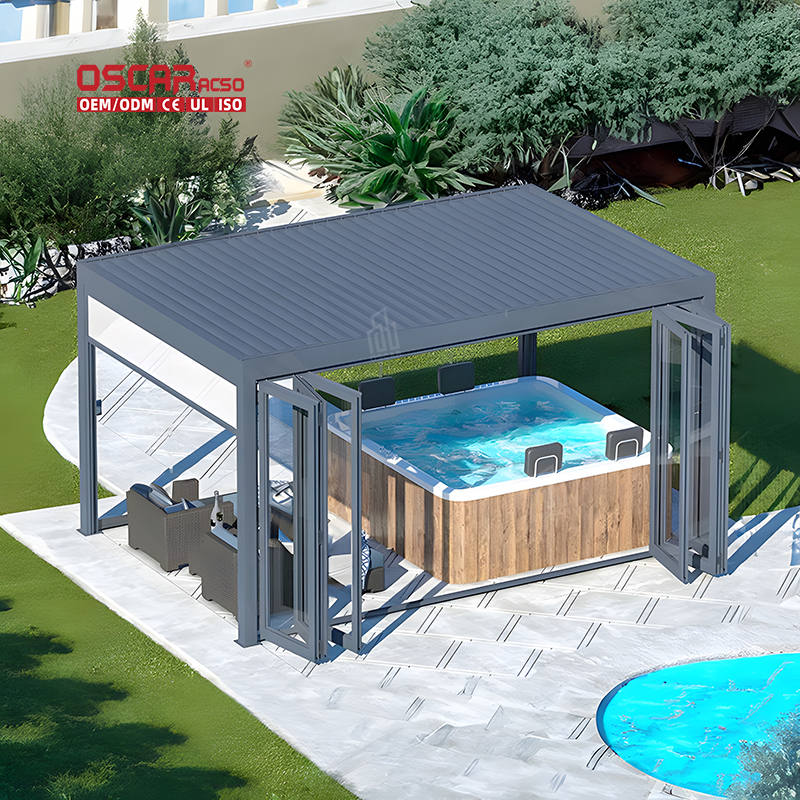Pergola Wood Selection, Unlock the Secret to Your Perfect Outdoor Oasis
Ever stood in your backyard dreaming of a gorgeous pergola, only to be overwhelmed by the question:\"Which wood should I ...
Ever stood in your backyard dreaming of a gorgeous pergola, only to be overwhelmed by the question: “Which wood should I choose?”🤔 You’re not alone! This single decision will make or break your outdoor sanctuary, influencing everything from aesthetics and durability to your weekend maintenance schedule. Let’s unravel this wooden mystery together!
.jpg)
✨ Why Your Wood Choice Matters More Than You Think
Selecting the perfect wood for your pergola isn’t just about picking the prettiest grain. It’s a crucial balance between budget, climate, desired aesthetics, and long-term maintenance commitment. The right choice creates a lasting, beautiful structure that enhances your home’s value and your quality of life. The wrong one can lead to premature rot, insect damage, and costly repairs or replacements.
🌲 Top Contenders: A Deep Dive into Pergola Woods
Cedar: The Natural Beauty 🌟
A crowd favorite for good reason! Cedar boasts a natural resistance to decay, rot, and insect damage, thanks to its inherent protective oils. Its warm reddish-brown hue and distinct aroma add a touch of elegance to any garden. While it ages to a lovely silvery gray, it does require regular staining or sealing every few years to maintain its vibrancy and prolong its life. It’s a fantastic balance of beauty, durability, and relatively moderate cost.
Redwood: The Premium Classic 🔴
.jpg)
Renowned for its stunning color and exceptional durability, redwood is a top-tier choice. Like cedar, it’s naturally resistant to insects and decay and is dimensionally stable, meaning it’s less likely to warp or twist. The major consideration? Its premium price tag. It also requires consistent maintenance to preserve its rich color and protect it from the elements.
Pressure-Treated Pine: The Budget-Friendly Workhorse 💪
If initial cost is a primary concern, pressure-treated pine is your go-to. It’s chemically treated to resist rot, decay, and insects, making it a durable and affordable option. Its downside is its often less appealing greenish tint, which typically needs to be stained or painted over. Regular maintenance is crucial as the protective chemicals can break down over time.
Tropical Hardwoods (Ipe, Teak): The Durable Luxe 💎

For an unparalleled blend of density, durability, and exotic beauty, look to hardwoods like Ipe or Teak. They are incredibly resistant to rot, insects, and even fire. Ipe is so dense it’s often called “ironwood.” This luxury comes with challenges: a high price tag, difficult workability requiring special tools, and sourcing concerns—always opt for ethically and sustainably harvested options.
Douglas Fir: The Strong & Versatile 🌲

A practical choice known for its strength and moderate cost. Douglas Fir takes stain and paint beautifully, allowing for easy customization. While not naturally as resistant as cedar or redwood, it becomes a durable option for pergolas when treated with a proper protective finish.
⚖️ The Great Balancing Act: Comparing Your Options
Wood Type | Durability & Resistance | Maintenance Needs | Cost Estimate | Best For |
|---|---|---|---|---|
Cedar | High natural resistance | Regular sealing/staining | $$ | Balanced budgets, natural beauty |
Redwood | High natural resistance | Regular sealing/staining | $$$ | Premium projects, stability |
Pressure-Treated Pine
| Good (after treatment) | Regular sealing/staining | $ | Budget-conscious builders |
Tropical Hardwoods | Extremely high resistance | Low, but oiling enhances beauty | $$$$ | Maximum longevity, luxury looks |
Douglas Fir | Good (with proper finish) | Regular sealing/staining | $$ | Strength, painting/staining projects |
🛡️ Beyond the Wood Type: Factors That Seal the Deal
Your wood choice is just the start. Proper installation and relentless maintenance are the unsung heroes of pergola longevity. Ensure your structure has a solid foundation, good airflow, and uses corrosion-resistant hardware. A high-quality protective finish—be it stain, sealant, or paint—is your pergola’s best friend, shielding it from moisture, UV rays, and wear.
Climate is king in this decision. Humid, rainy areas demand highly rot-resistant woods like cedar, redwood, or tropical hardwoods. In dry, sunny climates, UV protection becomes the top priority. Always consider your local weather patterns.
💡 My Personal Take: It’s About Your Story
While the specs table is essential, your pergola is more than data. It’s about the memories you’ll create under it. For me, Cedar often hits the sweet spot—it offers a magnificent blend of natural durability, beauty, and a manageable price point that doesn’t sacrifice character. However, if you loathe maintenance and have the budget, the unparalleled durability of Ipe might be your ultimate worth-it splurge, lasting for decades with minimal care.
Don’t underestimate the charm of reclaimed wood for a story-rich, eco-friendly option, or even bamboo for a uniquely sustainable and rapid-growing alternative.
Remember, the most expensive wood isn’t always the bestwood—the best wood is the one that perfectly aligns with your vision, your climate, and your willingness to care for it over the years. Choose wisely, and build a space you’ll love for decades.


.jpg)